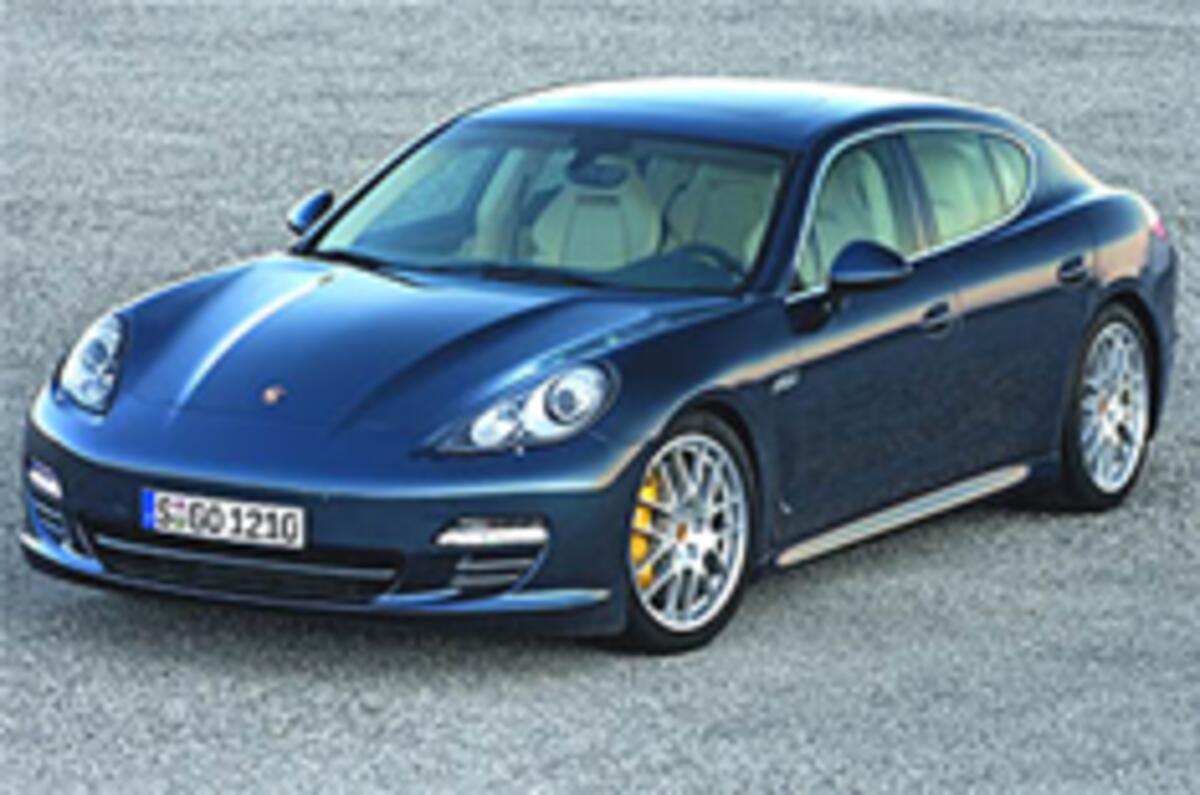In addition to the pictures of its controversial super-saloon, Porsche has also released more technical details of the forthcoming Panamera.
Despite its size and performance, Porsche has integrated various weight-reduction measures. The car uses a steel monocoque structure, but the bonnet, doors and tailgate are all aluminium and there are many other lightweight metal and composite parts. All versions weigh less than 2000kg, and the lightest two-wheel-drive V6 is about 1600kg.
The car sits on a longish wheelbase of 2.92m to help accommodate the all-important rear compartment for two, along with a 100-litre fuel tank. Porsche says that one of the car’s key targets was to be no taller than a 911, and no longer than a Cayenne.
As with the Cayenne, Porsche has been none too subtle about stretching its sports car design cues over the Panamera. The effect is unmistakably Porsche and the proportions are certainly arresting. The interior has a high centre console and a five-dial instrument layout, also reminiscent of existing Porsches, but it is distinguished by some superbly crafted metal-finish switches, bezels and finishers.
Three petrol motors will be offered from launch: a 300bhp 3.6-litre V6, a 400bhp 4.8-litre normally-aspirated V8 and a 500bhp twin-turbo V8. The engines feature the latest direct fuel injection and electronic management measures to cut internal friction and ‘intelligent’ electrically operated oil and power steering pumps that consume less engine power than normal. Porsche says such features save about 6mpg.
The V6 is new, although it is understood soon to be shared by some VW Group models. The familiar Cayenne V6 ‘would not have fitted under the bonnet’.
There is also a hybrid version, which uses the V6 with an electric assistance motor. The car can be driven by either its V6 or (slowly, for about 15 miles) its electric motor. The electric motor charges the on-board battery bank when the car is cruising. For maximum acceleration, the two motors combine.
Although the hybrid is 150kg heavier than a standard Panamera V6, Porsche claims a 28 per cent fuel consumption cut and a 21 per cent increase in cruising range.
The basic 300bhp V6 is a two-wheel-drive car with a six-speed manual gearbox, whereas the hybrid V6 has a Tiptronic automatic. Customers can order V8s with either manual or seven-speed twin-clutch gearboxes, and with a four-wheel drive system that borrows much of its hardware and software from the Cayenne. The Turbo gets the seven-speeder and four-wheel drive as standard.
The Panamera platform is all-new and unlikely to be shared with any other model because of its unusual proportions. Likewise the suspension; Cayenne components would have been needlessly heavy.
The entry models ride on 18in wheels and have steel brake discs. Some models get 19in wheels and the Turbo has ceramic discs and huge yellow calipers to go with its fat tyres on 20in wheels.




Join the debate
Add your comment
Re: Porsche Panamera: the technical story
Ditto the Jaguar XF..
Re: Porsche Panamera: the technical story
I like the idea of a proper manual gearbox! BMW M5 TAKE NOTE!!!